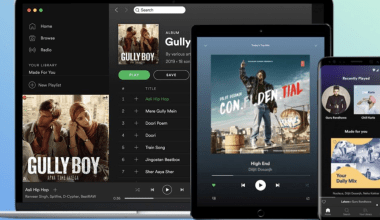Making your music available to the world has never been easier, thanks to platforms like YouTube Music. If you’re an independent artist, you no longer need a massive label to distribute your songs. With just a few simple steps, you can get your track on YouTube Music and share it with a global audience. In this guide, we’ll walk you through the process of submitting your music, and we’ll share tips to help you make the most of your release.
Why YouTube Music Matters for Independent Artists
YouTube Music is one of the largest music streaming platforms, with millions of active users. It’s a fantastic way to reach new fans, showcase your creativity, and even earn revenue. For independent artists, YouTube Music is not just a platform; it’s an opportunity. It levels the playing field, allowing you to stand alongside well-known artists. And the best part? You retain full control over your music.
Step 1: Create High-Quality Music
Before diving into distribution, it’s crucial to ensure your music is the best it can be. High-quality audio is essential. Work with a professional producer or sound engineer if possible, and make sure your track is mixed and mastered to industry standards. Listeners are more likely to enjoy and share a polished song, so take the time to perfect your sound.
Step 2: Choose a Distributor
To get your music on YouTube Music, you’ll need a music distributor. Distributors act as the bridge between you and the streaming platforms. They ensure your music is uploaded correctly and meets all requirements. Some popular distributors include:
- Deliver My Tune: An excellent choice for independent artists, offering affordable plans and seamless distribution to YouTube Music and other platforms.
- DistroKid
- TuneCore
- CD Baby
Compare the features and pricing of each distributor before making your choice. Look for one that aligns with your needs as an independent artist.
Step 3: Prepare Your Track for Submission
Once you’ve chosen a distributor, it’s time to get your track ready for submission. Here’s what you’ll need:
- Audio File: Your track should be in a high-quality format like WAV or FLAC.
- Artwork: Create eye-catching cover art that represents your music. Make sure it meets the platform’s specifications.
- Metadata: Include all the necessary details about your track, such as the title, artist name, and release date.
Step 4: Submit Your Track
With everything ready, log in to your chosen distributor’s platform and start the submission process. Follow these steps:
- Upload Your Track: Add your audio file and artwork.
- Fill in Metadata: Enter all relevant information about your track. Be accurate, as this data will appear on YouTube Music.
- Select Platforms: Choose YouTube Music and any other platforms where you want your music to appear.
- Set a Release Date: Decide when you want your track to go live. Give yourself enough time to promote the release.
Step 5: Promote Your Music
Submitting your track is just the beginning. To make an impact, you need to promote your music effectively. Here are some strategies:
- Leverage Social Media: Share your track on platforms like Instagram, Twitter, and TikTok. Engage with your followers and encourage them to listen and share.
- Collaborate with Influencers: Partner with influencers or content creators who can feature your music in their videos.
- Create a YouTube Channel: Use YouTube to upload music videos, lyric videos, or behind-the-scenes content. This can help you build a loyal fan base.
- Pitch to Playlists: Reach out to playlist curators and ask them to feature your track on their playlists.
Tips for Success on YouTube Music
- Optimize Your Profile: Make sure your artist profile on YouTube Music is complete and professional. Include a bio, links to your social media, and a high-quality profile picture.
- Engage with Fans: Respond to comments and interact with listeners. Building a connection with your audience can lead to more streams and loyal fans.
- Monitor Your Analytics: Keep an eye on your track’s performance using analytics tools. This data can help you understand your audience and refine your promotional strategies.
Monetizing Your Music on YouTube Music
One of the biggest benefits of being on YouTube Music is the opportunity to earn revenue. Here’s how it works:
- Streaming Royalties: You earn money each time someone streams your track on YouTube Music.
- YouTube Content ID: If your music is used in YouTube videos, you can earn additional revenue through Content ID.
To maximize your earnings, consider releasing music regularly and maintaining an active presence on the platform.
Conclusion
Submitting your track on YouTube Music as an independent artist is a straightforward process, but it requires preparation and effort. By choosing the right distributor, like Deliver My Tune, and promoting your music effectively, you can reach a global audience and grow your career. Remember, success doesn’t happen overnight, but with persistence and passion, you can make your mark on YouTube Music.
Related Articles:
For further reading, explore these related articles:
- How to Successfully Submit Your Track on YouTube Music in 2025
- How to Submit Your Track on YouTube Music Easily
For additional resources on music marketing and distribution, visit DMT RECORDS PRIVATE LIMITED.






